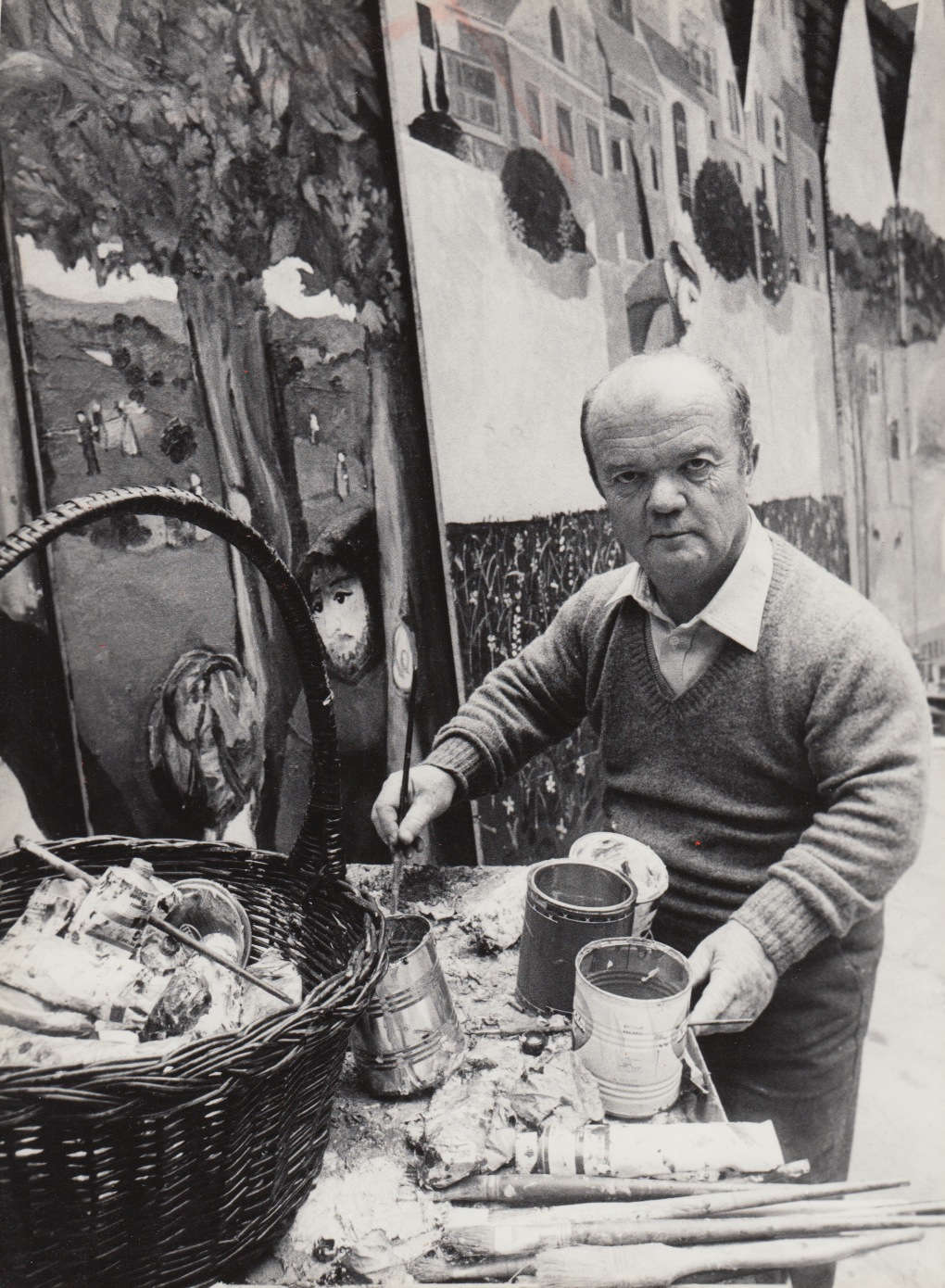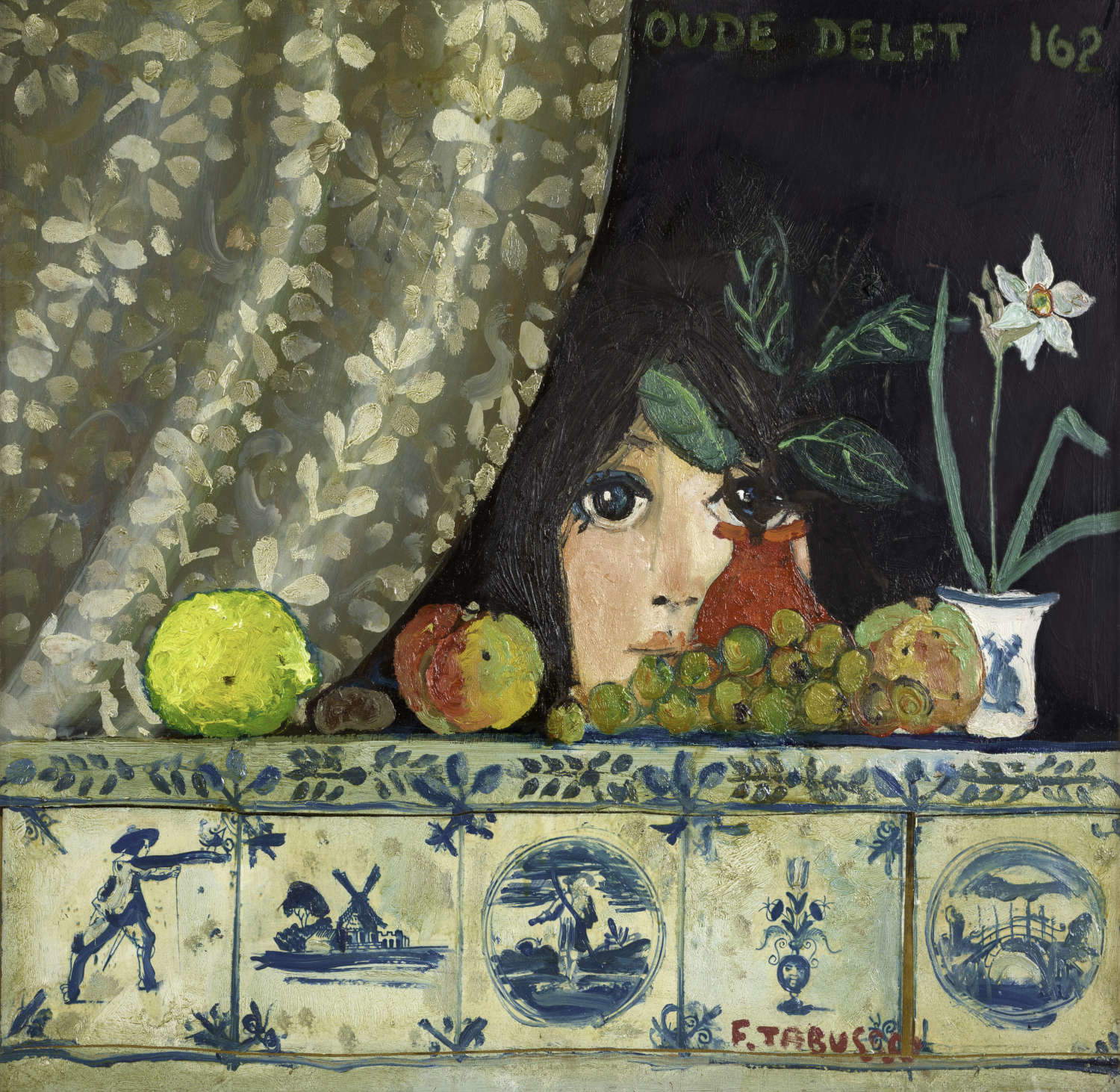Francesco Tabusso's painting on display in Turin
From October 27 to December 7, 2023, Spazio Ersel in Turin is hosting an exhibition dedicated to Francesco Tabusso (Sesto San Giovanni, 1930 - Turin, 2012), a figurative painter active in the second half of the 20th century. The exhibition is titled Painted Tales: Francesco Tabusso in Private Collections, is curated by Marco Sobrero and Archivio Francesco Tabusso and is organized in collaboration with the Archivio Francesco Tabusso. The works on display trace a time span that begins with the 1960s characterized for Tabusso by a dense and successful exhibition season, culminating with his participation in the 1966 Venice Biennale where he presented the large polyptych L’atelier di via Salvecchio , of which 3 pieces traced through cataloging work are exhibited here. The work, composed of 10 canvases in themselves autonomous, was conceived as a large puzzle of about 2 by 6 meters for the wall of the Biennale hall.
In the following decade, Tabusso repeatedly approached hagiographic themes, also stimulated by his passion for images of popular devotion: here then is the large panel of the Temptation of St. Anthony the Abbot, painted for the solo show at the Galleria la Bussola in Turin in 1969 and never exhibited to the public since; a work in which the artist’s magical world populated by sometimes cruel animals, rustic landscapes, festive villages and mischievous creatures manifests itself, even with irony. Not missing from the exhibition is a reminder of the most intense “painted story” created by Tabusso: the pictorial cycle dedicated to St. Francis for Gio Ponti’s church in Milan; here prayer becomes painting, and walking down the nave toward the monumental altarpiece one discovers the 8 triptychs celebrating episodes from the life of the Saint of Assisi.
In the following decades, the themes dearest to the artist followed one another on the canvases: still lifes, the sea of northern Europe, the woods of the Susa Valley, the night sky of the countryside, and again the mistletoe harvest, peasant traditions, and passionate mycological and botanical knowledge. The anthological exhibition has privileged works from private collections tracked down during the work of cataloguing the paintings, acquired fifty to sixty years ago and remained the property of the families themselves, precisely because of their special value not only artistic and market, but affective and human.
As Francesco Poli points out in the critical text accompanying the exhibition, “Of figurative painters there are many, but there are very few who, with a language of imaginative sensitivity, are able to create the fascinating illusion of a world apart, at the same time rooted in collective memory and suspended in a dimension of harmonious empathy between man and nature. Among them is Tabusso, who has certainly had fun (but working hard) studying, exploring and inventing his own fabulous narrative of reality. A fun closely connected to the free choice of a research path directed ’elsewhere,’ in the territories where the signs and dreams of a painting of utopian serene happiness are cultivated.”
The exhibition opens Monday through Friday from 10 a.m. to 6 p.m. Special opening on the occasion of Artissima on Saturday, November 4, 2023, also 10am-6pm.
Biographical notes.
Francesco Tabusso, born in 1930, a native of Turin by ancestry and all his life, was born on the outskirts of Milan, in Sesto San Giovanni, where at the time the family moved in the wake of his engineer father. Manifesting a passion for painting at an early age, he attained a classical high school diploma before embarking on a rigorous apprenticeship under Felice Casorati. Far from being an epigone, at school from the famous teacher Tabusso he cultivated a love for the craft and reasoning about the old masters, inheriting from Casorati the ability to transfigure the real, to restore its enchanted dimension, out of time, in a sort of “magic realism” with fairy-tale tones that is entirely personal. Electing above all a rural world of even popular inspiration as his subject, he manifested from the beginning an authentic “vocation for storytelling,” which would lead him to happy collaborations with some of the best-known signatures of 20th-century Italian literature, such as Piero Chiara, Dino Buzzati, Mario Soldati, and Mario Rigoni Stern.
1954 is the year of his exhibition debut and first participation in the Venice Biennale. In a short time the artist is invited to major national and international exhibitions, collecting numerous prizes-purchases as part of the competition exhibitions that multiplied after World War II to increase the civic collections of contemporary art. From 1963 to 1984 he flanked his painting with teaching activities: he taught ornament at the Liceo Artistico in Bergamo, then figure at the Liceo dell’Accademia Albertina in Turin. Also from 1963 Tabusso collaborated with Galleria Gian Ferrari in Milan, which curated his activity exclusively for about thirty years, organizing in those years more than sixty personal exhibitions of the author in Italy and abroad. By virtue of an art that has always celebrated man and nature with immediacy and expressive force-with the gift of “simplicity”-he is called upon to create in 1975, for the Church of San Francesco al Fopponino in Milan designed by Gio Ponti, the monumental altarpiece Il Cantico delle Creature (96 m2 of painting) and later the eight triptychs with the stories of the Saint. Tabusso died in Turin in 2012 after about sixty years of tireless artistic activity.


 Francesco Tabusso,
Francesco Tabusso,
 |
| Francesco Tabusso's painting on display in Turin |
Warning: the translation into English of the original Italian article was created using automatic tools. We undertake to review all articles, but we do not guarantee the total absence of inaccuracies in the translation due to the program. You can find the original by clicking on the ITA button. If you find any mistake,please contact us.





























